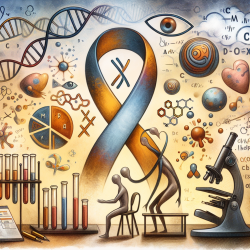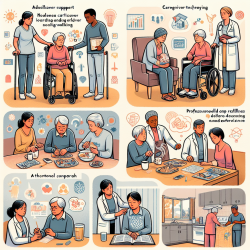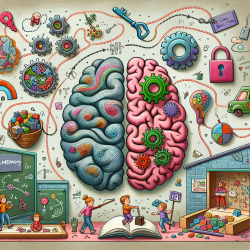The c.429_452 duplication of the ARX gene is a rare genetic anomaly that has significant implications for understanding X-linked intellectual disability (XLID) and limb kinetic apraxia. This blog aims to provide practitioners with insights from recent research and encourage further exploration into this unique developmental model.
Understanding the Research
The study conducted by Curie et al. (2014) focused on 27 patients from 12 different families in France who were affected by the c.429_452dup24 mutation in the ARX gene. This mutation is associated with a recognizable clinical syndrome characterized by intellectual disability without primary motor impairment, but with specific upper limb distal motor apraxia.
The research highlighted that patients exhibited a pathognomonic hand-grip and a unique "reach and grip" impairment not observed in age- and IQ-matched Down syndrome patients. The kinematic data revealed significant impairments in finger dexterity and coordination, particularly affecting the fourth finger and pronation movements.
Practical Applications for Practitioners
For practitioners working with individuals affected by this mutation, the findings offer several practical applications:
- Assessment and Diagnosis: Incorporate standardized cognitive, behavioral, and motor evaluations to identify specific motor impairments associated with the ARX mutation.
- Therapeutic Interventions: Develop targeted therapies focusing on improving fine motor skills and coordination, particularly for distal movements involving individual fingers.
- Family Education: Educate families about the specific challenges associated with ARX-related impairments to foster better understanding and support at home.
Encouraging Further Research
The study opens up avenues for further research into the developmental aspects of limb kinetic apraxia. Researchers are encouraged to explore:
- The genetic mechanisms underlying ARX-related impairments and their impact on neural development.
- The potential for early intervention strategies to mitigate motor impairments in affected individuals.
- The broader implications of ARX mutations on cognitive and behavioral development.
By delving deeper into these areas, researchers can contribute to a more comprehensive understanding of ARX-related conditions and improve outcomes for affected individuals.
To read the original research paper, please follow this link: The c.429_452 duplication of the ARX gene: a unique developmental-model of limb kinetic apraxia.










